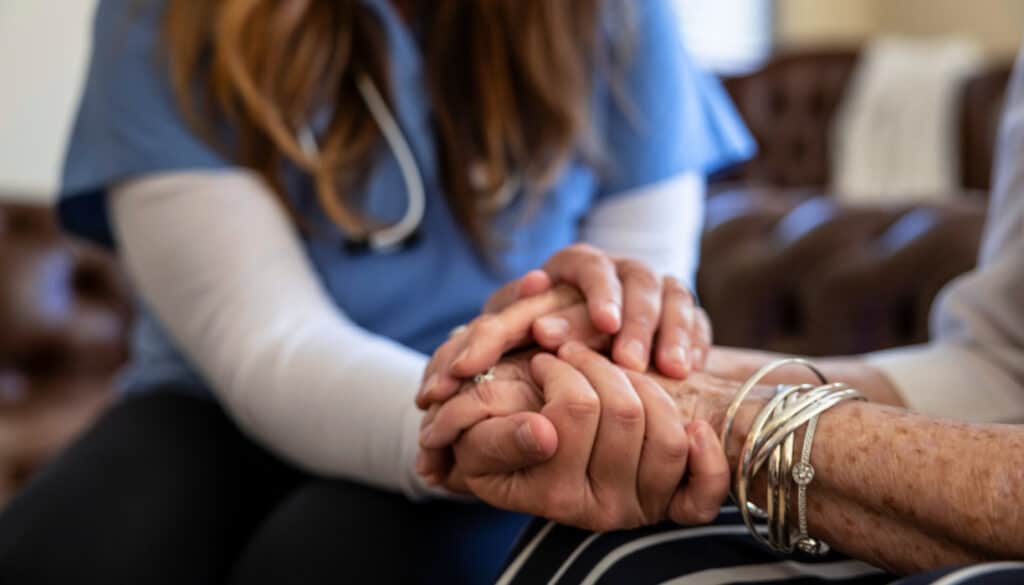In today’s new world, healthcare is becoming more personalized. That means bedside manner training is an increasingly important aspect of patient care. In fact, research shows that when healthcare professionals take time and effort to show their patients good bedside manner, they fare better managing chronic diseases like diabetes or high cholesterol.
Our society places emphasis on cultivating the best possible experience for each individual especially during trying times. Healthcare professionals are not only expected to focus on effective care, they need to make efforts to know their patients’ names and build connections with them.
The good news is that most healthcare professionals understand the role that bedside manner plays in the patient experience. It can be learned through practicing some common sense techniques which we’ve all been taught since childhood: be kind and show empathy. You never know what a patient needs until YOU listen closely.
How to Improve Your Bedside Manner
The bedside manner is the way a healthcare professional communicates with patients. It includes both verbal and nonverbal communication, and it can have a big impact on the patient’s experience. It can influence everything from pain perception to recovery time. We’ve put together a few tips for improving your bedside manner.
Active Listening Skills
The single most important aspect of good bedside manner is taking the time to listen to your patient. Interacting with your patient using “Active Listening Skills“, will accomplish several things at once. It establishes a comfort level with your patient because they feel that you are taking the time to listen to them. And, it allows you to glean more information from the patient that may be helpful. A patient that feels heard will have a more positive outlook on their situation.
Non-Verbal Active Listening
At the same time that you are listening to your patient and engaging with them, your body language should be consistent with your verbal actions. These “Non-Verbal Active Listening“, techniques solidify your patient-provider relationship. One of the key techniques is to maintain eye contact with your patient. This can be difficult to do while you are attending to various other things during the patient interaction, but make it a point to meet your patient’s eyes as often as possible during the interaction.
Your facial expressions will also say more to your patient than your words. Smiling when you meet them and showing empathy when appropriate will “tell” your patient that you care. Be sure to “smile with your eyes” since wearing a mask can make this gesture more difficult to read. Another great technique for displaying genuine interest is to lean in towards them with an open posture as they speak to you.
Communication
In addition to listening to your patient, it’s important to consider how you speak to them. Relationships are two way streets so, keep it simple. Your goal is to make them feel comfortable, not to impress them with how much you know.
As you listen to them speak, you can form a sense of their level of understanding and tailor your language accordingly. Use laymen’s terms and simple language when possible so they can understand what’s happening without feeling overwhelmed or intimidated by medical jargon.
Attention to Detail
Pay attention to the details. In a hospital setting, take a moment to straighten up the bedside table, or ask your patient if they need more ice, even if you have other staff that would normally take care of those things. It’s the little things that can really make a difference. Details like opening or closing the blinds for them or helping them with some other environmental factor (hot or cold) may seem tiny and barely worth your time, but these details mean mountains to that person who is tired, upset, or worried about their future, etc.
Human Contact
Another clear way to show compassion and respect for your patients is by human contact. A gentle touch to their hand can make them feel cared for in exactly the right way- without even realizing what happened! This simple gesture has incredibly powerful lasting effects.
Many health professionals are naturally gifted at establishing relationships with their patients; others have to make a conscious effort to work at it. Some experts who teach bedside manner techniques, leave their students with a simple but powerful message:
You will have the best bedside manner if you imagine that each patient you are caring for is your parent, child, or family member. Not everyone can make that leap when considering the needs of their patient, but those that can will have an entirely different perspective on the human side of medicine.
search content
subscribe to
the shc blog


